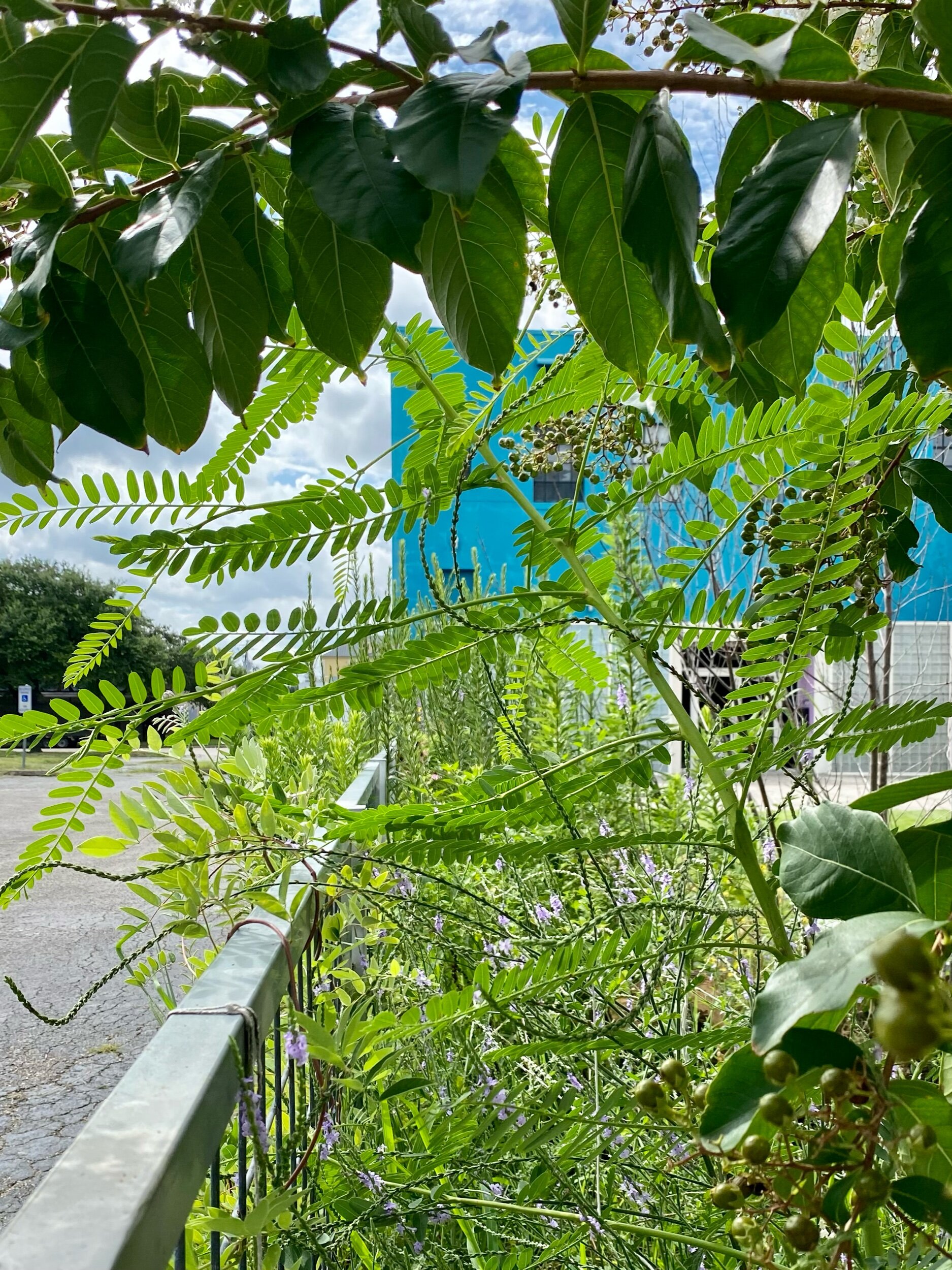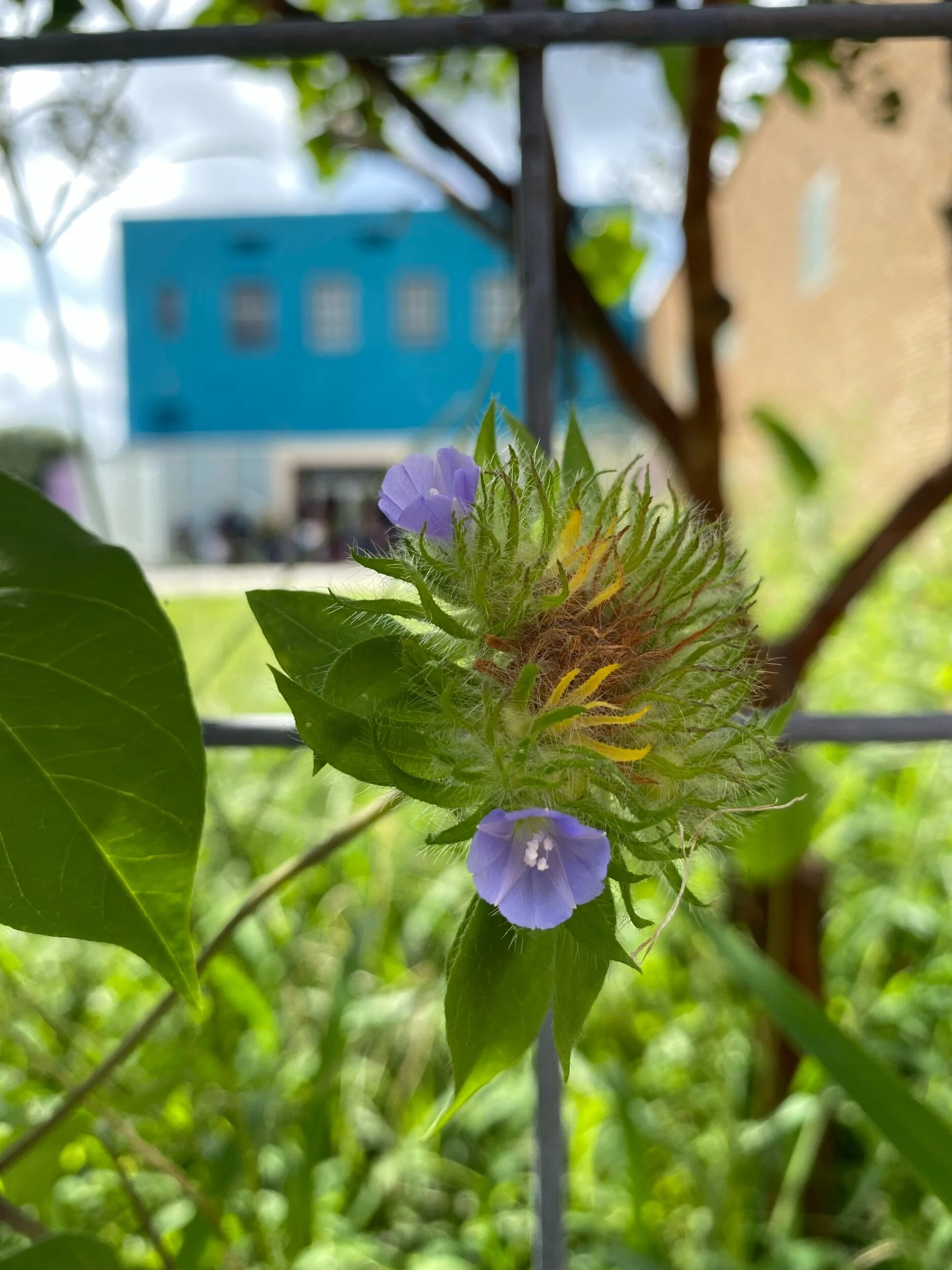In June the Lawndale Art Center opened the Big Show. I was very fortunate that nature was cooperating and Symbiosis was vibrant with both plants, pollinators and insects. The skies were full of dragonflies of every color, there was not a mosquito in sight. The bee balm was a bee crowd-pleaser and the passionflower was crawling in caterpillars. It felt good.
For approximately two weeks after Houston received large amounts of rainfall. Rain or shine I still went every day to observe the landscape, look for signs of new urban wildlife and learn from the work. I saw that a living sculpture is a moving target. During this time period, plenty of volunteer plants appeared, covering the spots of bare earth as nature knows is best. I diligently photographed the volunteer plants and researched them through my National Geographic citizen naturalist iNaturalist app. If they supported wildlife and they were in a location that they were not distracting I left them. If they were visually obtrusive or blocking another plant's growth or light. I pulled them. I winced with each pull, my instinct in regards to healthy soil and natural solutions was to leave them, they are sequestering carbon, any disturbance of soil releases carbon. Weeds have a role in the ecosystem: they establish quickly, protect exposed soil, provide habitat for beneficial organisms. Weeds are a natural response to heal disturbed earth. From an environmental point of view, they are a benefit to the landscape. From an artist's point of view, I love the weeds. They add a variety of line, an unexpected pop of color, movement, rhythm and a variety of patterns. As a sculptor interested in ways I can incorporate time snd movement in my work, I am a fan of weeds they are a design tool.
That said as an earth conservation art activist the purpose of the work is to inspire others to use native plants in urban landscapes. If the weeds turn people off before they learn about the work, the piece as art activism is a failure. Finding the balance, the symmetry with weeds continues to weigh heavily on my mind. I remind myself of the bigger picture—activate change, create a micro-ecosystem that others will be inspired to imitate. I know change can happen at lightning speed when innovation is coupled with imitation.
Phytolacca americana, also known as American pokeweed,
Detail of Phytolacca americana, American pokeweed,
Sesbania is a genus of flowering plants in the pea family, Fabaceae, and the only genus found in the tribe Sesbanieae. Riverhemp
a nitrogen fixer
“Nitrogen is the element responsible for lush green plant growth, but plants aren't actually able to use the nitrogen gas in Earth's atmosphere. Certain plant species, though, harbor bacteria in their roots that convert nitrogen from the atmosphere into a form that plants can absorb.“ learn more here.
Aesthetically as an artist this quiet corner of graceful movement is inspiring. The repeated surfboard shaped leaves delicately attached to the slender stem create a stunning rhythm and repeated pattern.
Jacquemontia tamnifolia Hairy cluster vine - insanely cool bloom, complex in its texture, shape, and color palett.
As stunning as this complicated vine’s bloom is I could not find anything about it it online, except it is capable of surviving fires. It does have the physical characteristics that attract bees, blue petals, and exposed stamen. I will take the risk and keep it. With any luck it will support at least one of pollinator species that we do not yet know we have lost. To return what we do not know we have lost is what inspires me to do this work.
I came across an invasive species, Fatoua villosa Hairy Crabweed. see future Symbiosis post





